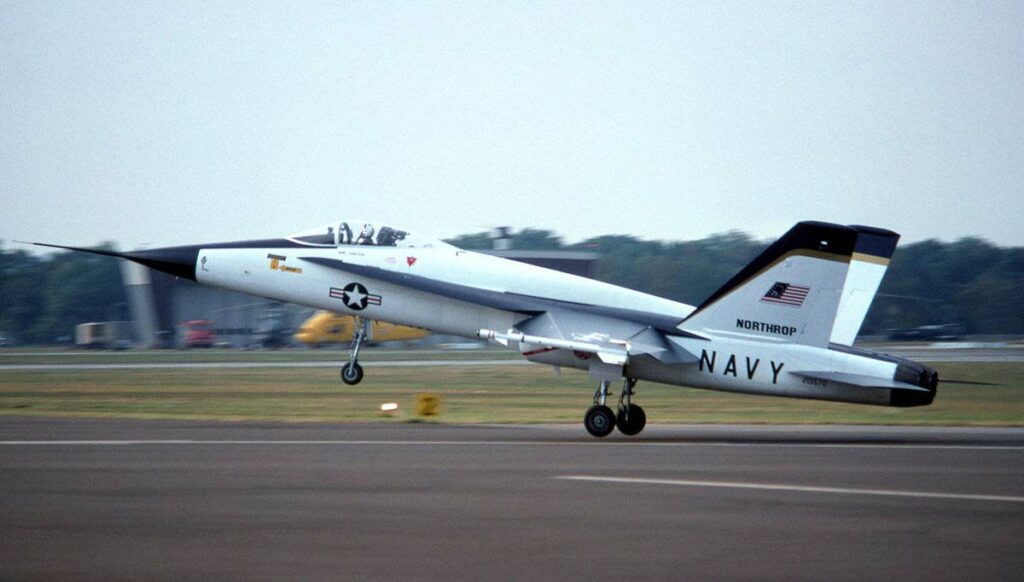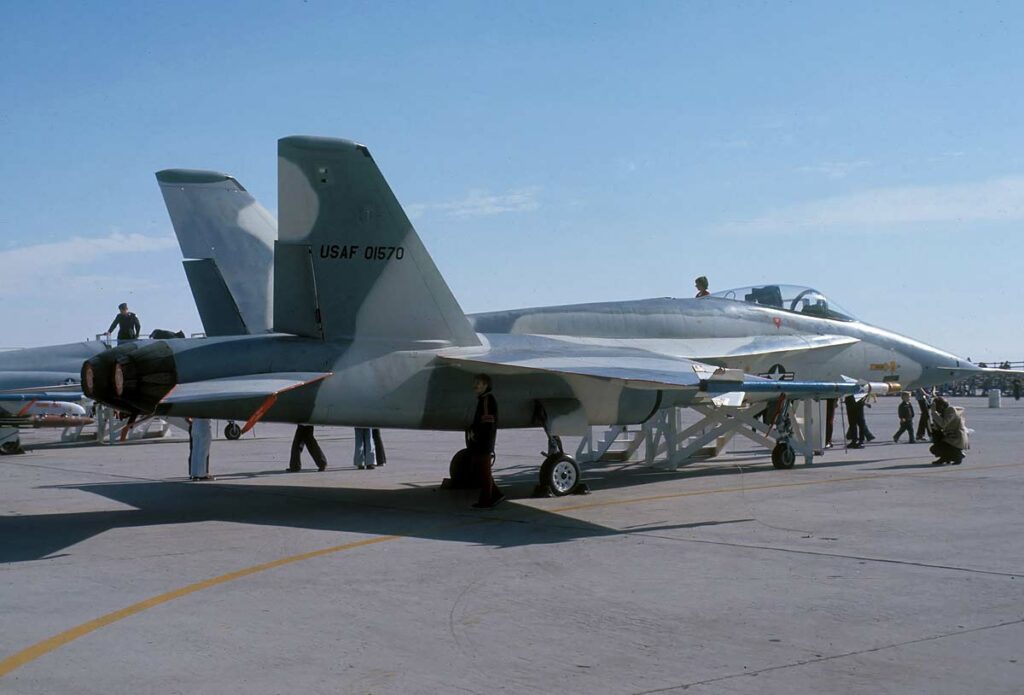Prototype fighter aircraft, precursor to F/A-18, showcasing advanced agility, speed, and twin-engine design.
In brief
The Northrop YF-17 Cobra was a prototype light fighter aircraft developed in the 1970s, known for its agility, high performance, and innovative design. Featuring a twin-engine configuration, it was designed to fulfill the United States Air Force’s (USAF) requirement for a cost-effective, high-performance fighter. The YF-17 was characterized by its high maneuverability, capable of sustaining 9-g turns, a top speed of over Mach 2, and incorporated advanced aerodynamics with features such as leading-edge extensions for enhanced lift. Though it did not win the USAF competition, becoming the F-16’s predecessor, its design philosophy and technology were instrumental in the development of the Navy’s F/A-18 Hornet.
The Northrop YF-17 Cobra marked a significant phase in the evolution of jet fighter aircraft during the Cold War era. As military requirements evolved towards versatile and highly maneuverable fighters, the YF-17 was Northrop’s answer to the USAF’s Lightweight Fighter (LWF) program, aimed at developing a smaller, simpler, and cost-effective alternative to the larger and more complex fighters of the time.

History of the Development of the Northrop YF-17 Cobra
During the late 1960s and early 1970s, the USAF recognized the need for a new type of fighter that emphasized agility over raw speed and heavy armament. This led to the Lightweight Fighter (LWF) program, with the objective of developing a nimble fighter that could achieve air superiority through maneuverability and energy-sustaining performance. Northrop Corporation, leveraging its extensive experience in fighter design, initiated the YF-17 project to compete in this program. The YF-17 first took to the skies on June 9, 1974, showcasing its innovative design and performance capabilities.
The development of the YF-17 was driven by a strategic shift in air combat philosophy, prioritizing maneuverability and pilot situational awareness. Northrop’s design reflected this shift, incorporating advanced aerodynamics and lightweight construction materials to create a fighter that was both agile and fast, capable of engaging adversaries in close combat with superior maneuverability.
Design of the Northrop YF-17 Cobra
The design of the YF-17 was groundbreaking, featuring a twin-engine layout that provided redundancy and increased survivability. It had a length of 56 feet, a wingspan of 35 feet, and a height of 16 feet, with a wing area that allowed for exceptional maneuverability at various speeds. Its leading-edge extensions reduced stall speed and improved angle of attack performance, a feature that would become common in later fighter designs.
The aircraft was constructed using advanced materials and manufacturing techniques to reduce weight while maintaining strength and durability. The cockpit was designed for enhanced pilot visibility, crucial for dogfighting and ground attack missions. Despite these innovations, the YF-17 faced challenges, including the need for further development to meet all the specific requirements of the LWF program and adaptation for carrier operations for the Navy’s needs.
Performance of the Northrop YF-17 Cobra
The YF-17’s performance was impressive, with a top speed of over Mach 2, a ceiling above 50,000 feet, and the ability to sustain high-g turns, making it highly competitive with other fighters of its era. Powered by two General Electric YJ101-GE-100 engines, it demonstrated excellent acceleration and energy-sustaining capabilities in combat scenarios.
While the YF-17 did not win the USAF contract, its performance and design concepts significantly influenced future fighter aircraft, notably the F/A-18 Hornet, which utilized many of the YF-17’s aerodynamic and design innovations.
Variants of the Northrop YF-17 Cobra
The YF-17 program primarily produced two prototype aircraft for the LWF competition. Although these prototypes were not developed into further variants by the USAF, the design and technology of the YF-17 were adapted by McDonnell Douglas (now Boeing) in the development of the F/A-18 Hornet for the United States Navy, marking the transformation of the YF-17’s design legacy into a multirole fighter aircraft.

Military Use and Combat of the Northrop YF-17 Cobra
The Northrop YF-17 itself did not see military service or combat as it was a prototype developed for the LWF program. However, its technological and design influence profoundly impacted military aviation. The F/A-18 Hornet, directly derived from the YF-17, has been extensively used by the U.S. Navy and Marine Corps, as well as various other countries, demonstrating the enduring legacy of the YF-17’s design in combat operations worldwide.
Recap
The Northrop YF-17 Cobra represents a pivotal moment in fighter aircraft design, where emphasis shifted towards maneuverability and versatility. Although it did not enter service with the USAF, its legacy lives on through the F/A-18 Hornet, demonstrating the YF-17’s impact on modern fighter aircraft development. Its innovations in aerodynamics, materials, and design philosophy continue to influence military aviation, highlighting the importance of adaptability and forward-thinking in aerospace engineering.
Back to the experimental aircraft section.